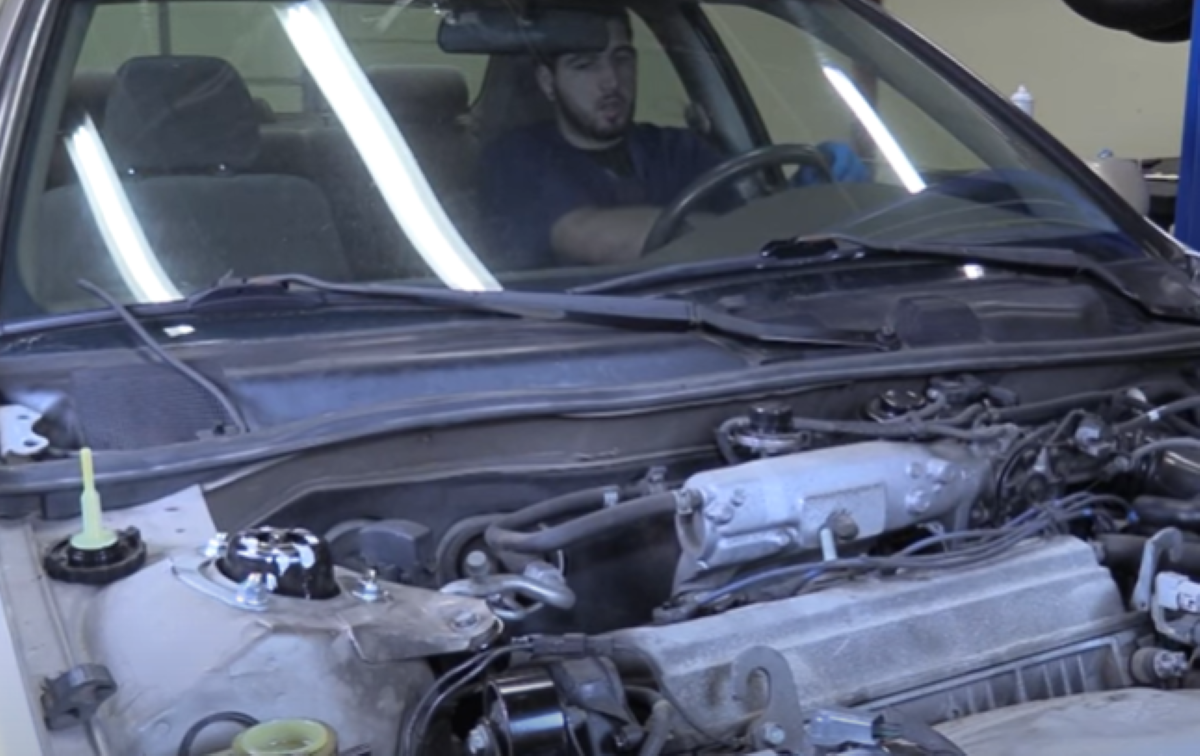If you’ve replaced any parts in the power steering system like the power steering lines or the power steering rack where you’ve lost fluid, you’ll need to add more. Once you’ve added new power steering fluid to the system, you’ll also need to bleed it. This video and post reviews how to bleed the power steering fluid yourself quickly and easily.
When Should I Bleed the Power Steering Fluid?

If you’ve found you’ve had to replace parts that require or come with a loss of power steering fluid, you’ll need to add more fluid to the system to replace what leaked. Bleeding the power steering fluid will remove any air from inside the system.
Will Bleeding the Power Steering System Fix Bubbles in the Fluid?
If the power steering fluid has bubbles, air is leaking inside the system, which is a safety concern. Bleeding the power steering fluid won’t remove any bubbles if there’s a leak inside the system. If you see bubbles, you’ll want to check for leaks inside the system and fix those before bleeding the power steering fluid.
How to Bleed the Power Steering Fluid
Time needed: 5 minutes.
Steps to bleed the power steering system
- Use Manufacturer-Specified Fluid
Check your owner’s manual and use the fluid your vehicle manufacturer recommends that works for your vehicle. Don’t mix the power steering fluid with other fluids.
Read more about mixing fluids with the power steering fluid - Jack the Vehicle Up with Jacks
Jack the vehicle up with a jack and jack stands so the front tires aren’t touching the ground.
- Find the Power Steering Fluid Reservoir and Remove the Cap
Find the power steering reservoir, which is usually located near the other reservoirs and overflow tanks. In some cases the reservoir will be on the power steering pump.
Once you’ve found the reservoir, remove the cap.
- Add New Power Steering Fluid to the Reservoir
Add manufacturer-specified fluid to the power steering fluid reservoir until it reaches a full level, and leave the cap off.
- Turn the Steering Wheel to Each Lock Position for a Couple of Turns
Put the key in the ignition to unlock the steering wheel without the vehicle on.
Turn the steering wheel all the way over in one direction until it locks. Then turn the steering wheel in the other direction until it locks. Repeat turning the steering wheel to each wheel lock position for a couple of turns. - Turn the Vehicle on
Once you’ve turned the steering wheel from one lock position to the other for a few times, start the engine.
- Turn the Steering Wheel to the Lock Position on Each Side Until It Seizes to Whine
With the engine running, repeat step 5. Turn the steering wheel to one side until it locks, and then do this for the other side. Continue turning the steering wheel to the lock position on each side for a couple of times. This can get messy, so expect power steering fluid to burst up and out of the reservoir. Once you’ve fully turned the wheel on each side for a few times and the whining has stopped, turn the vehicle off.

- Shut the Vehicle Off and Top Off the Power Steering Fluid
When you’ve stopped hearing a whining sound when turning the steering wheel, shut the vehicle off. Then add more fluid to the reservoir so that it’s full, clean off any power steering fluid that spilled, and reinstall the power steering reservoir cap.
Have You Seen Our How-to Videos?
Learn different diagnostics and repairs with tips from our expert mechanics. The 1A Auto video library has tons of how-to videos to help you fix and replace your own parts.
Shop Quality Auto Parts

Shop Parts and Tools
More Automotive Knowledge
- How to Use a Paint Pen and Is Touch Up Paint Worth It?
- 2011 to 2019 Ford Explorer Problems
- Towing Mirrors Guide
- What Is an O2 Sensor?

